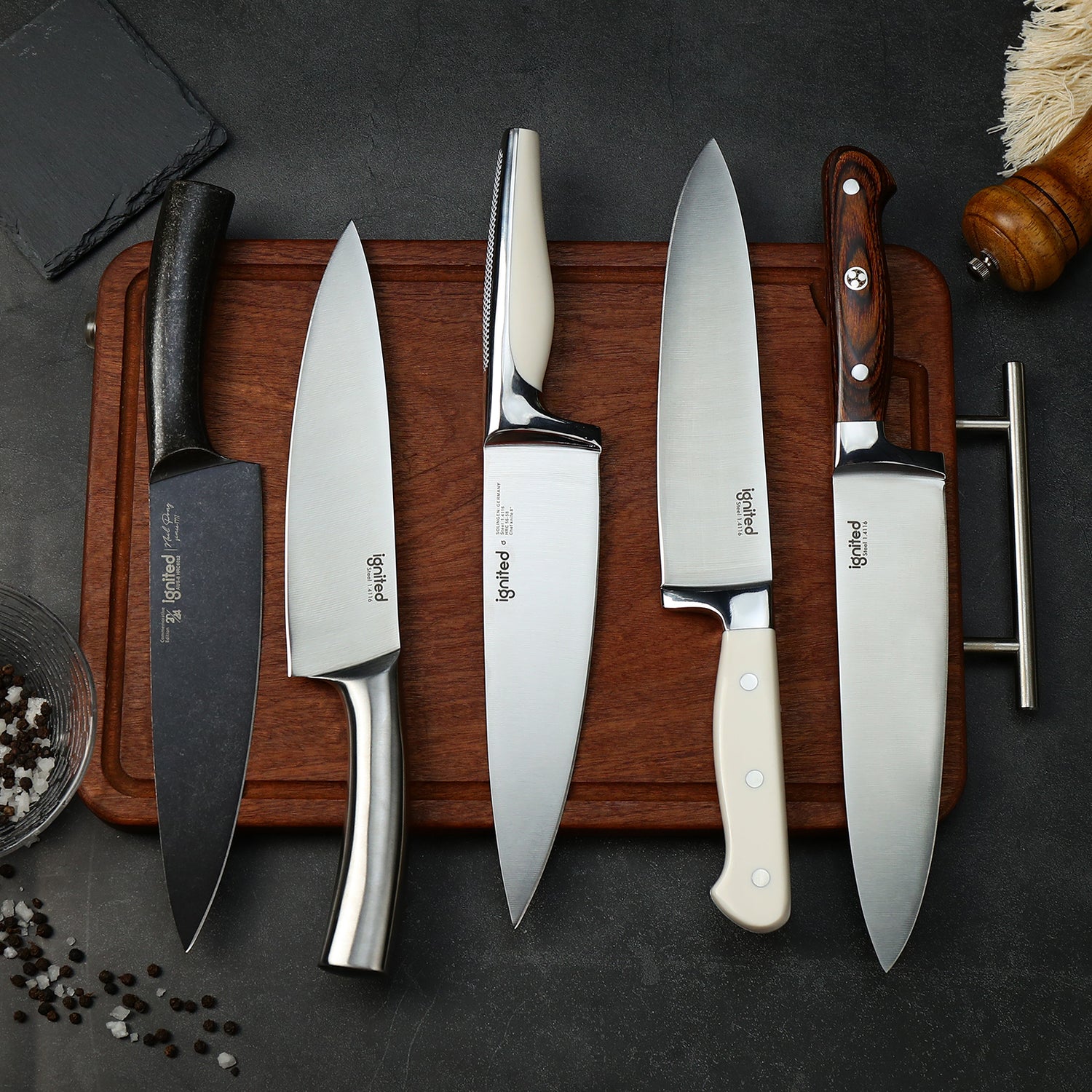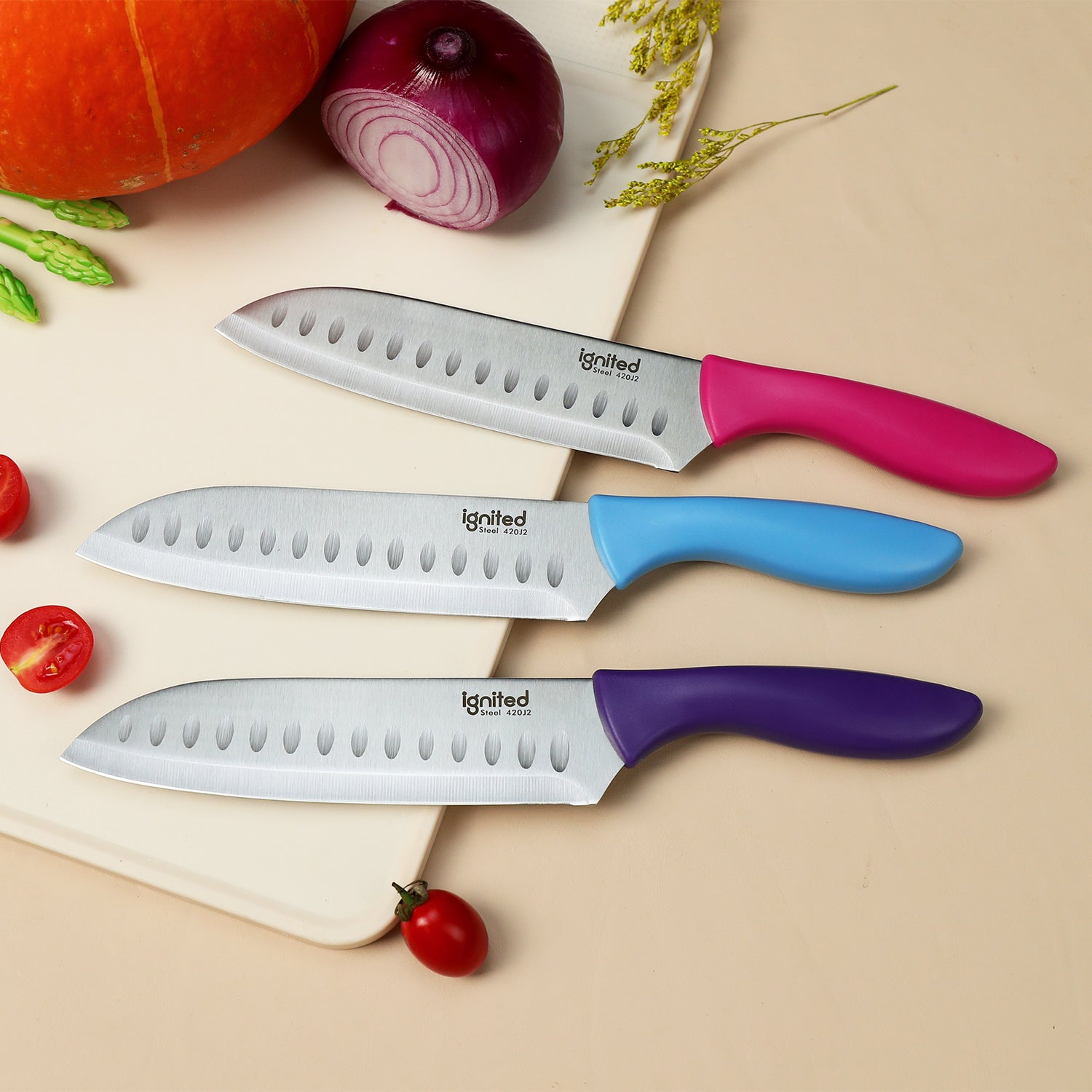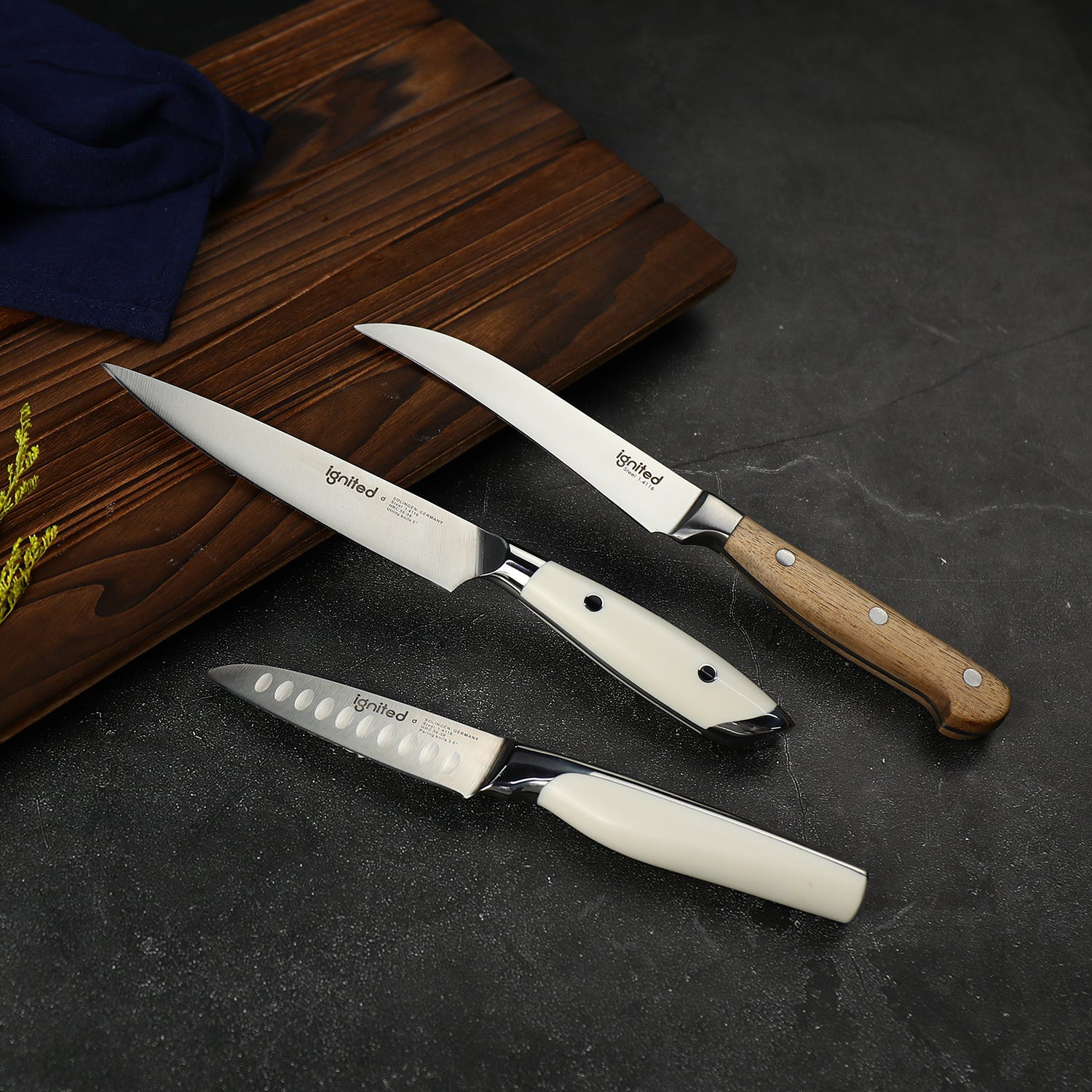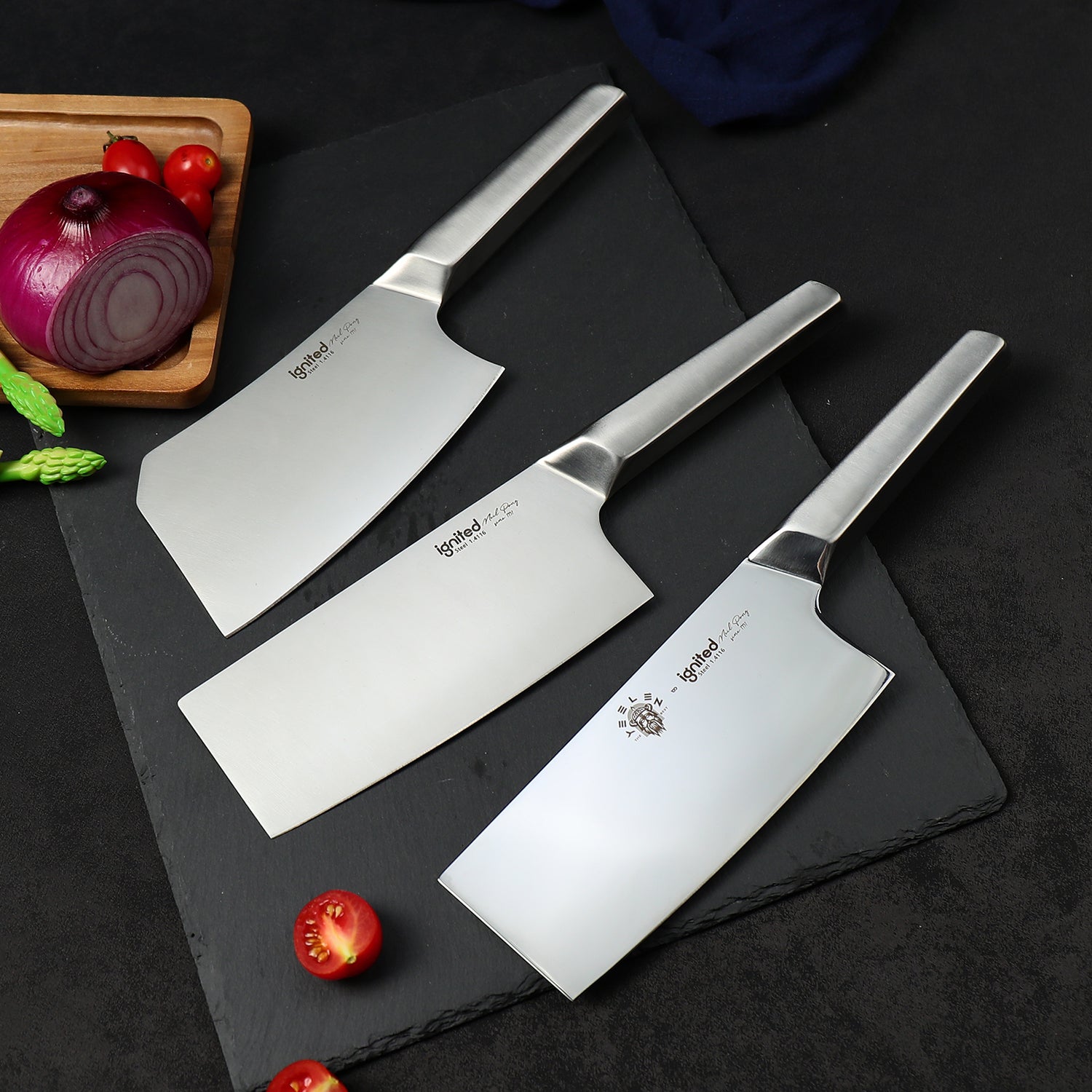A sharp chef’s knife is faster, safer, and far more enjoyable to cook with. Yet even the best blades lose their bite over time. In this guide, Ignited Cutlery explains the most common reasons knives go dull—and the simple habits that keep your edge performing like new.

Understanding Knife Dulling
The Nature of Knife Edges
Most kitchen knives use a double-bevel edge typically finished between ~15°–20° per side. During cutting, the ultra-thin apex rolls, fatigues, or micro-chips. Over time, this degrades slicing performance until you restore the geometry by honing (realign) or sharpening (re-cut the edge).
Why Sharpness Matters
Sharp knives require less force, track straighter, and are less likely to slip. Clean cuts also protect food texture—think crisp tomato slices and tidy herb chiffonade.
Common Causes of Knife Blade Dulling
1) Improper Usage
- Wrong tool for the job: A chef’s knife handles produce and boneless proteins; bones, frozen food, and hard squash are better for a cleaver or specialized knife.
- Excessive force: Let the edge do the work. Use smooth push or draw cuts instead of pressing straight down.
2) Cutting Surface
- Hard boards: Glass, granite, and ceramic blunt edges rapidly. Choose quality wood or food-safe plastic.
- Scraping with the edge: Use a bench scraper or the spine/flat of the blade to move food.
3) Storage Practices
- Loose drawers: Blades collide and chip. Use a block, magnetic strip, or edge guards.
- Moisture exposure: Prolonged dampness can promote corrosion. Dry thoroughly before storage.
4) Maintenance & Care
- Skipping regular sharpening: Even premium steel dulls with use. Hone frequently to realign; sharpen on stones when the edge no longer responds to honing.
- Dishwasher washing: Heat, detergents, and rattling accelerate dulling and damage handles. Hand-wash with mild soap; dry immediately.
5) Environmental Factors
- Tough materials: Bone, shell, and frozen items can chip a fine edge.
- Thermal shock: Quenching a hot blade in cold water can warp or micro-fracture the edge. Let it cool first.
Quick Edge-Saving Checklist
- Use wood or plastic boards only.
- Move food with a scraper or the blade’s spine.
- Hone lightly before prep; sharpen on stones as needed.
- Hand-wash, then towel-dry immediately.
- Store in a block, on a magnetic strip, or with guards.
Frequently Asked Questions
1) What is the best way to sharpen a chef’s knife?
Use water stones (e.g., ~1000 grit to establish the edge; ~3000–6000 for refinement). Maintain a consistent 15°–20° per side, use even pressure, and finish with light strokes. Strop if desired.
2) How often should I sharpen?
For regular home use, hone lightly before sessions and sharpen every 2–8 weeks depending on usage, board, and steel. If honing no longer restores bite, it’s time to sharpen.
3) Can honing replace sharpening?
No. Honing realigns a rolled edge; sharpening removes steel to recreate it. Honing extends intervals between full sharpenings.
4) Which cutting board preserves sharpness best?
End-grain or well-maintained edge-grain wood and quality plastic are the most edge-friendly options.
5) Is the dishwasher safe for knives?
No. Hand-wash with mild soap, rinse, and dry immediately to protect the edge and handle.
Keep Your Edge, Cook with Confidence
Small habits protect sharpness. Choose the right surface, store safely, clean by hand, and keep a simple honing-and-stone routine. Your knives—and your cooking—will reward you every day.




